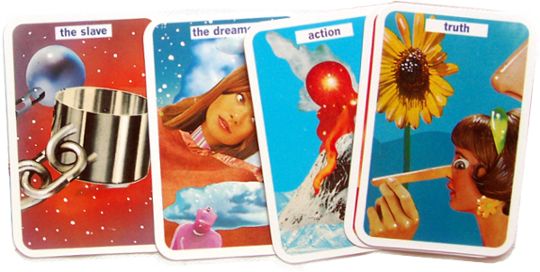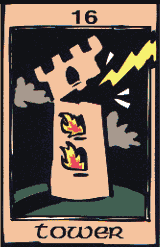English Tarot Cards
The game of tarot was not widely accepted in England until the 1870s when a number of English occultists had begun taking an interest.
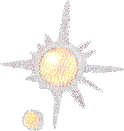
Generally-speaking, the game of tarot was not widely accepted in England until the 1870s when a number of English occultists had begun taking an interest in the tarot, such as Samuel L. MacGregor Mathers (1854-1918), Arthur Edward Waite (1857–1942) and Aleister Crowley (1875-1947). Cartomantic tarots commenced being produced in the early 20th century and since then there has been a distinguished output of English Tarot Cards.
Leading up to this, the eighteenth century had brought a revival of interest in the older tradition and antiquarianism became fashionable. There was an intense curiosity about the glories of the past, a time of rediscovery and of much vague theorizing mingled with scholarship. From about 1850 England saw the rise of a growing interest in spiritualism, including interest in séances, connecting with the dead, the occult, etc. Madame Helena P. Blavatsky (1831-1891) founded the Theosophical Society which connected with Eastern mysticism, and a line of successors introduced Eastern spirituality to the West. These included Annie Besant (1847-1933), J. Krishnamurti (1895–1986), G.I. Gurdjieff (1866-1949), P.D. Ouspensky (1878-1947), etc., as well as Maharishi Mahesh Yogi's Transcendental Meditation in the 1960s, the hippie movement, Sri Prabhupada's Hare Krishna movement and so forth. Today the range of New Age or alternative therapies available includes Tarot readings, Chakra realignment and cleansing, crystals, massage etc to a myriad of other options. Virtually anything can be found.
Back in Victorian England, MacGregor Mathers, leader of the Hermetic Order of the Golden Dawn, was the author of a popular booklet on the tarot, in which he wrote that "the Tarot, consisting as it does, of the ten numbers of the decimal scale counterchanged with the tetrad, and of a hieroglyphical alphabet of twenty-two mystic symbols, must be relegated to a far earlier period in the history of the world than that usually assigned to the introduction of cards into Europe". Mathers was no doubt aware of the new ideas originating from the East, and also offered theories on the Egyptian origins of the Tarot, and threw in some extra ideas about Gnosticism and Cabbalism.

The Rider-Waite Tarot Cards were first published in England in 1909, and printed by William Rider & Son, London. They were sold either separately, or accompanied by a book written by Arthur Edward Waite titled "The Key to the Tarot". The Rider-Waite tarot was reissued in 1910 and many times since then. It became the most popular tarot pack of the twentieth century more → Card illustrated: The Star. According to Waite, this is a card of "The Great Mother of Supernal Understanding… who communicates in the measure that they can receive her influx." The Rider-Waite Tarot was designed by A.E. Waite and Pamela Colman Smith, and it expresses the artist's sense of mysticism, ritual, imagination, fantasy and emotional experience within the context of Waite's astrological and alchemical symbolism. |

The Thomson-Leng Tarot Fortune Cards, like the Romany Fortune-Telling Cards, were published in 1935 for readers of women's magazines of the day and printed by The Universal Playing Card Company, Leeds more → Cards illustrated left: Ace of Cups and Temperance… a happy home life full of joy and contentment is possible with a bit of good management, especially in marriage. If upside down, then start worrying! The accompanying booklet describes the cards as "the oldest and most wonderful fortune telling cards in the world… in which seers throughout the ages have recorded their knowledge", and then gives instructions on consulting the cards in 'the gypsy way'. Examination of the pack reveals that some of the symbolical motifs reappear in Fournier's "El Gran Tarot Esoterico" (1978). |

The Thoth Tarot was painted by Lady Frieda Harris (1877-1962) under the guidance of Aleister Crowley (1875-1947) during WWII, a time of great national anguish. The imagery of the cards reflects Crowley's eclectic occultist philosophy which, like Waite, included astrological and alchemical symbolism, along with other esoteric lore more → Card illustrated: The Star. There have been several editions of this pack published since 1972 and it has become one of the more popular 20th century tarot packs. The original paintings were made with wartime materials, and are currently housed in the Warburg Institute, London, where they are beginning to show signs of deterioration. |
Above: The letterhead from the Insight Institute, dated 1949. The letter accompanies the pack of tarot cards, plus lessons, and acknowledges receipt of £2.
|
During the late 1940s and 1950s The Insight Institute, of New Malden in Surrey, ran correspondence courses on the Tarot, which consisted of lessons with homework which was checked by tutors. The principal of the Institute was Adrienne Arden, and the "Directors of Studies" were Richard Eden, Noel Jaquin, Colin Evans, Edward Whitman, Vera Crompton and Frank Lind, who subsequently published the correspondence course material under his own name. |
|
The Rolla Nordic Tarot was first published in 1960 during the hippie tarot revival and was inspired by the Insight Institute’s tarot study course.
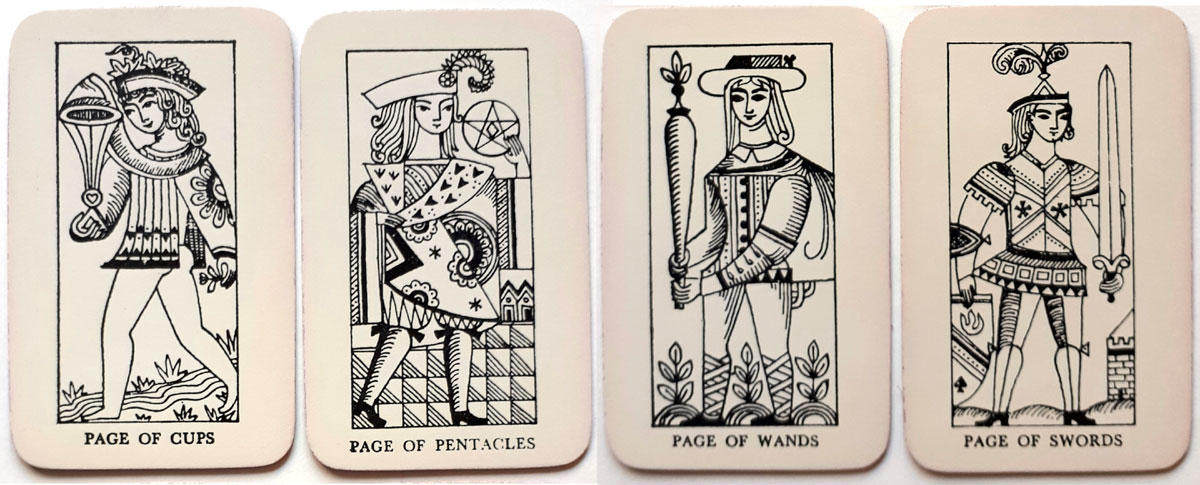
Above: Rolla Nordic Tarot designed by Paul Mathison for Rolla Nordic more →
During the 1970s Waddingtons distributed tarot packs in England, often in conjunction with Stuart Kaplan, such as the 1JJ Tarot deck manufactured by A.G. Müller + Cie, Switzerland in 1970. Stuart Kaplan also commenced publishing 'complete and authoritative guides' on the tarot, as well as re-publishing the Rider-Waite Tarot (see above) which has now become a classic.
The English (or Rigel) Tarot Cards were published by Rigel Press Ltd, London, UK, 1975. These were claimed to be ‘Authentic English fortune telling’ Tarot cards, said to be based on a 15th century original found in the British Museum. However, these claims are misleading more►

Above: ‘Authentic English fortune telling’ Tarot cards printed by Malcolm G. Read Limited, London. Published by Rigel Press Ltd, London, UK, 1975 more►
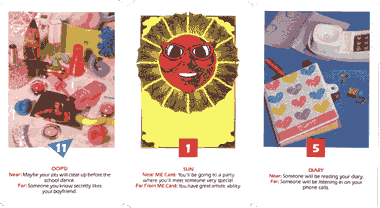
Cards illustrated left: Number 11: OOps!, maybe your zits will clear up/Someone you know secretly likes your boyfriend. Number 1: You'll be going to a party/you have great artistic ability. Number 5: Someone will be reading your diary or listening in on your phonecalls.
Waddington's Girl Talk Fantasy Fortune Cards were published in 1989 & 1992: 40 cards. The recommended age is 8-12 years, and simple instructions are given for laying out the cards and telling fortunes, also cautioning that "of course, no one can really predict the future…"
The Psychic Companions, formerly The Psychic Friends Network and based in Lancashire, runs a phone-a-psychic service using either tarot, runes or numerology. A set of tarot cards and runes is available, along with a quarterly magazine covering a variety of psychic topics, workshops, prize draws and classified ads. The customer pays for readings at the rate of £1 per minute.
There are a total of 26 cards in the pack: 22 Major Arcana plus the four aces of the tarot deck. Each card is clearly numbered at the top, in Helvetica typeface, and inscribed along the bottom in a half-uncial style of calligraphy, so that the data can be given to the psychic over the telephone. The leaflet accompanying the cards describes the tarot as "one of the most important forms of western mysticism".




Russell Grant astro-tarot
Cards illustrated: The Fool, The Moon, The Wheel of Fortune and The World. Russell Grant's Astrology Club Tarot was published in 1999 in connection with Russell's live telephone readings service see more →.
Click here for free tarot readings►

By Simon Wintle
Member since February 01, 1996
Founder and editor of the World of Playing Cards since 1996. He is a former committee member of the IPCS and was graphics editor of The Playing-Card journal for many years. He has lived at various times in Chile, England and Wales and is currently living in Extremadura, Spain. Simon's first limited edition pack of playing cards was a replica of a seventeenth century traditional English pack, which he produced from woodblocks and stencils.
Related Articles

Engel-Tarot
Set of major arcana designed by Alois Hanslian depicting angels throughout.

Victorian grocer’s scale plate
Large flat plate decorated with highly coloured English cards and royal arms.

Tarot Actuel 1984
Major arcana to cut out, issued with the French magazine Actuel, using photographic images.

Queen of Arts
A wide variety of women artists celebrated on cards with illustrations by Laura Callaghan.

The Glasgow Pack
Issued to celebrate Glasgow’s reign as European City of Culture in 1990, with city views and works o...

Cathedrals, Abbeys & Minsters playing cards
54 pictures of different famous cathedrals, abbeys and minsters in England and Wales.

Christmas Carols
Christmas Carols playing cards illustrated by Stuart Dilks

Pam is the Knave of Clubs
Playing cards as metaphors in 18th century art - from fate, chance and social hierarchy t...

Question and Answer Games
A card game called “Impertinent Questions and Pertinent Answers” was launched in the early 1920s by ...

Dr Sacheverell
Dr. Henry Sacheverell's impeachment in 1710 sparked widespread public unrest and political upheaval,...

Leadmill playing cards
Promotional pack for an arts centre in Sheffield with designs by Martin F. Bedford.

Mountain Dream Tarot
Groundbreaking Tarot created by Bea Nettles, using photographs and photo montage.

Agatha Christie and card games
Agatha Christie uses card-play as a primary focus of a story, and as a way of creating plots and mot...

English Heritage
52 different colour photos of historic sites managed by English Heritage.

Il Tarocco Mitologico
Fully pictorial Tarot designed by Amerigo Folchi with figures mainly from Greek mythology.

The Malt Whiskies of Scotland
Three packs featuring photographs by Duncan McEwan of malt whisky distilleries in Scotland.
Trending Articles
Popular articles from the past 28 days



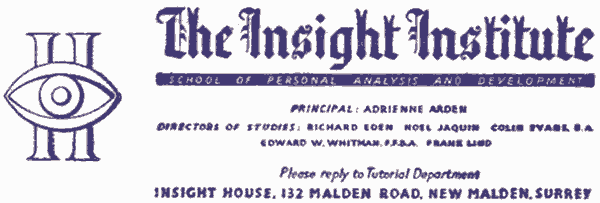

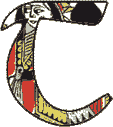 he Insight Institute also published courses on Astrology, Graphology, Chiro-Psychology, Yoga and Psychic development, as well as a
he Insight Institute also published courses on Astrology, Graphology, Chiro-Psychology, Yoga and Psychic development, as well as a 